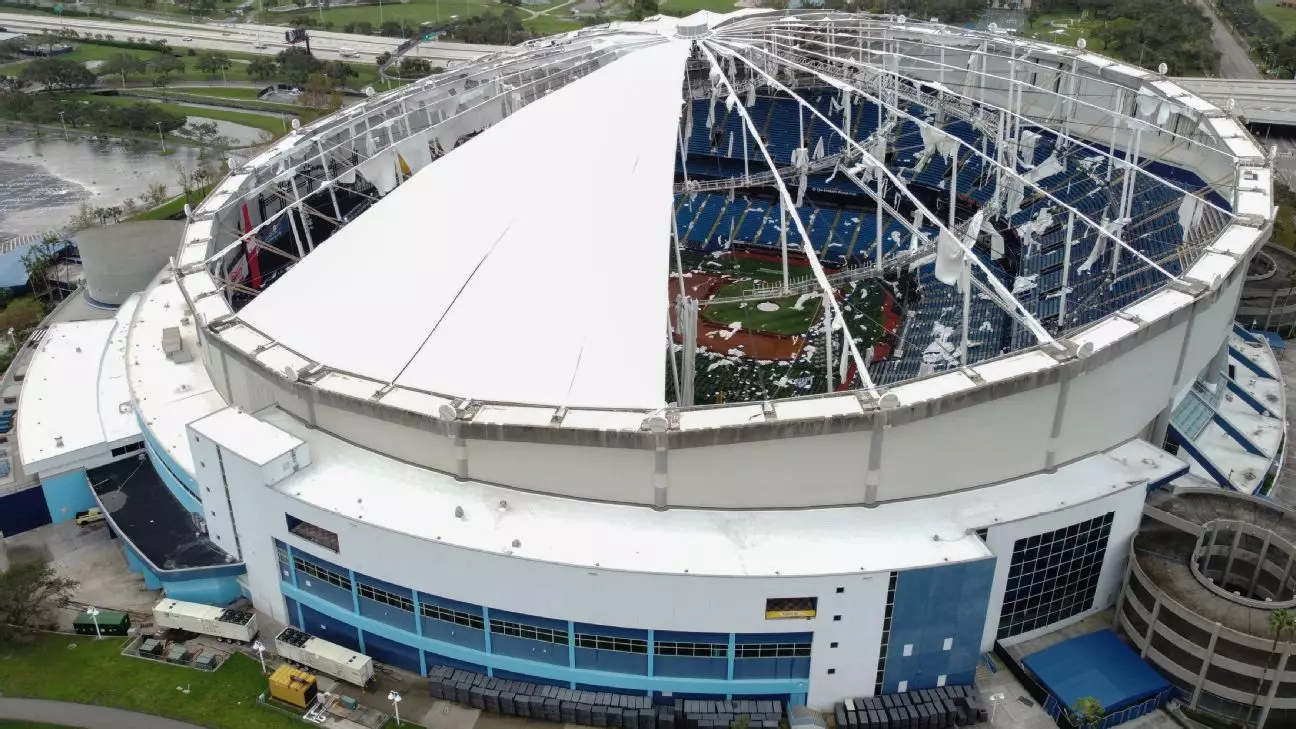In a significant turn of events, the Tampa Bay Rays announced their decision to halt the much-anticipated $1.3 billion baseball stadium project in St. Petersburg, Florida. Principal owner Stuart Sternberg expressed that this decision stemmed from a series of unpredictable events, notably driven by devastating hurricanes and resultant financial complexities. It’s clear that external factors can derail even the best-laid plans. The situation raises questions regarding the stability of the franchise and the future of baseball in the region.
The original proposal to construct a new 30,000-seat stadium, aimed at revitalizing the Historic Gas Plant District, was met with immense optimism when first announced. It was not merely about a venue; it symbolized hope for economic rejuvenation in a city with a storied baseball history. However, the disruptive forces of nature and fiscal hurdles reveal the fragility of such ambitious projects. As it stands, the current contract with the city compels the Rays to remain at Tropicana Field for three more seasons, albeit with the need for its restoration after sustaining damage from Hurricane Milton.
Fan Engagement and Attendance Concerns
One cannot overlook the broader implications of this decision on fan engagement and attendance figures for the Rays. With an average attendance of 16,515 last season—ranking third lowest in Major League Baseball—the franchise faces an uphill battle. How can the team re-engage its fan base amidst uncertainty about its future location? The decision to temporarily relocate to Steinbrenner Field in Tampa, while practical, may not solve the deeper problem of cultivating a loyal following.
Sternberg was keen to highlight the gratitude towards city officials for their ongoing efforts to restore Tropicana Field. However, the critical question remains: will a repaired Tropicana maintain its appeal to the local fanbase? Moving forward, the Rays will have to evaluate what a home-field advantage means to them, particularly when their temporary shelter is not just another stadium; it’s steeped in Yankees lore.
The Economic Narrative Behind the Rays’ Future
The economic ramifications of the stadium standoff resonate beyond sports; they delve into the very fabric of urban planning and community investment. The $6.5 billion revitalization plan for the Historic Gas Plant District was envisioned not only as a baseball haven but also as a catalyst for economic growth. The failure to secure financing poses a threat to that vision. The negotiations for public financing magnify the age-old debate about the use of taxpayer dollars for private ventures.
The Rays’ plight exemplifies how the intersection of sports and economic strategy can shape a community’s identity. As stakeholders scrutinize attendance and community interest during the upcoming season, it’s an opportunity for introspection. What do the fans truly want? A new stadium, or is it more about an enriched community spirit and engagement with a team that they can rally behind?
Ultimately, while the decision to retract the stadium proposal may feel like a setback, it could also serve as a crucial learning point. The Rays, the city, and its fans now find themselves at a crossroads, ripe for conversation and innovation as they navigate this tumultuous journey together.

